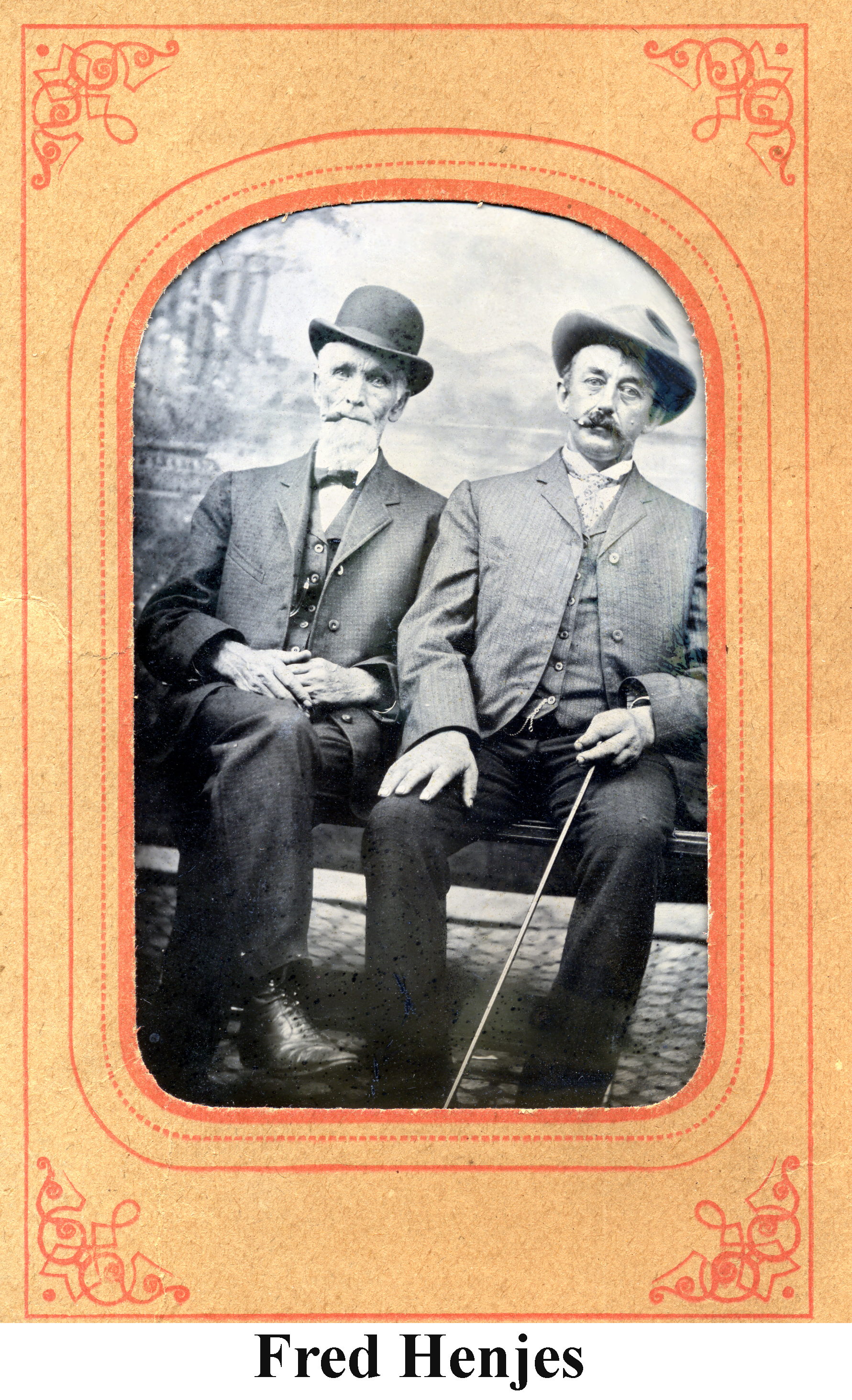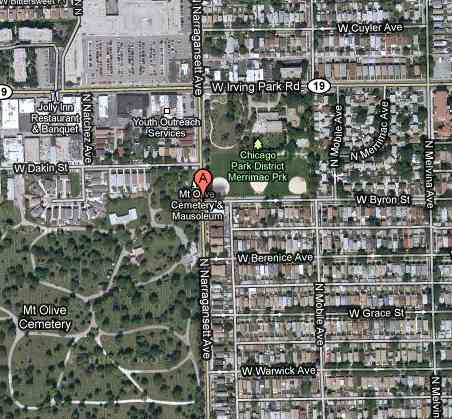
Tintype photograph of Fred Henjes (on the right) and an older man. I cannot identify the old man. The colorful paper frame is labelled "J.J. Hunter, Photographer, Kolze's Electric Park" on its back.
Return to "Families Are Forever- Busse, Henjes, Paton"
Kolze's Electric Park
Taken from chicago.urban-history.org/ven/pks/gardens.shtml
Summer beer gardens and commercially operated picnic groves were popular in Chicago prior to Prohibition and the widespread use of air conditioning. They were festive places, characterized by the lively music of old-world bands, the dancing of waltzes and polkas, the smell of grilled meats and smoked sausages, and an endless supply of locally brewed lagers. Often they were owned and operated by German-American families, who carried the traditions of community-based merry-making with them from the old country to the United States. Indeed, the majority of the city's largest beer gardens and picnic groves were located on the city's north side, home to a large German-American population.
Kolze's Electric Park was located along the south side of Iriving Park Boulevard just east of North 64th, or present Narragansett, Avenue in the sparsely developed Dunning section of Chicago. It was operated by Henry J. Kolze, who owned a two-story roadside restaurant and tavern on the site to serve visitors to nearby cemeteries and the Cook County Mental Hospital. The extension of streetcar service to the area in 1896 boosted traffic along Irving Park Boulevard and enhanced the commercial possibilities of the site. Kolze responded by developing a picnic grove in the wooded area behind his restaurant. By 1905, the park featured a dancing pavilion, a shooting gallery, various concession stands, and bright nighttime illumination. Attendance at the park steadily increased during the 1910s and 1920s, leading Kolze to undertake additional expansion of the park. By 1924, several new booths and refreshment stands had been added. Records also indicate that Kolze acquired additional property to the south of the original park, pushing its southern boundary to present Byron Avenue. The picnic grove remained in operation until the late 1940s. In 1950, the Chicago Park District acquired the property and announced plans to convert the picnic grove into a public park. In subsequent years, the park district demolished most of the structures on the property and replaced them with athletic fields, tennis courts, and a children's playground. The new park became known as Merrimac Park.
